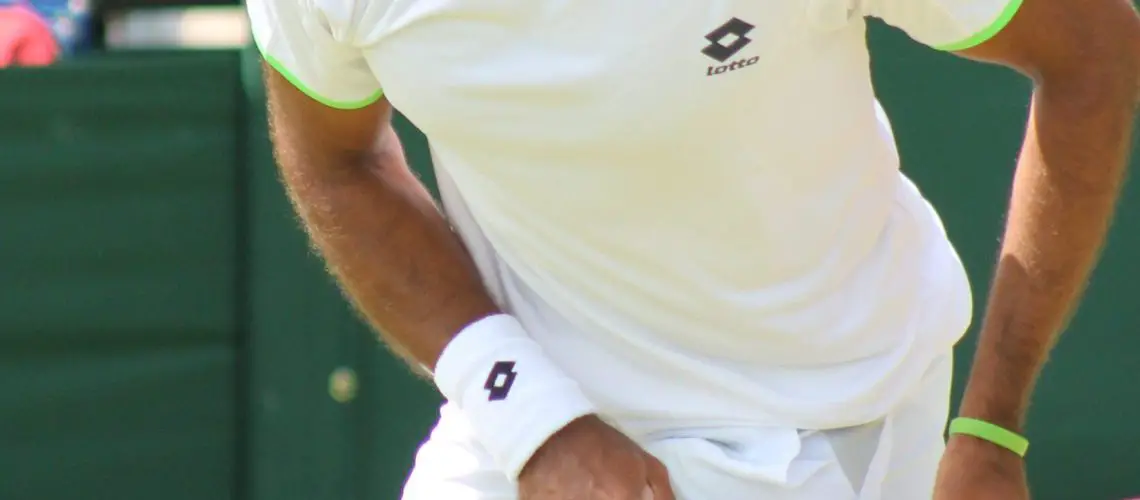We may earn money or products from the companies mentioned in this post.
Introduction

Tennis, a sport loved by millions around the world, is known for its fast-paced and thrilling matches From epic battles between tennis legends to intense rallies between rising stars, each match brings its unique blend of excitement and suspense However, have you ever wondered how long a tennis match can last? In this article, we will explore the duration of tennis matches and delve into the factors that influence their length Understanding match timings is crucial not only for players and organizers but also for fans who want to immerse themselves in the world of tennis
Overview of Tennis Matches and Their Duration
Tennis matches are typically played in either best-of-three sets or best-of-five sets formats, depending on the level of competition In best-of-three set matches, the first player to win two sets emerges victorious On the other hand, best-of-five set matches require a player to win three sets to claim victory
The duration of a tennis match can vary greatly, ranging from quick one-hour encounters to grueling five-hour marathons The average length of a professional tennis match is around two to three hours for men’s singles matches and slightly shorter for women’s singles matches
Factors Affecting the Length of a Tennis Match
Several factors contribute to the length of a tennis match:
-
Playing Style:
Different players have distinct playing styles that can impact match durations Aggressive baseliners who rely on powerful shots tend to finish points quickly, whereas defensive players who excel at retrieving balls may engage in longer rallies -
Court Surface:
The type of court surface also influences match duration Grass courts often result in faster play due to their low bounce, while clay courts can lead to longer matches as players have more time to chase down shots -
Weather Conditions:
Extreme weather conditions, such as scorching heat or heavy rain, can disrupt play and potentially prolong matches Players may need extra breaks or face delays due to adverse weather conditions -
Player Fitness:
The fitness levels of the competing players play a significant role in match duration Well-conditioned athletes are more likely to sustain high-intensity rallies and endure longer matches
Importance of Understanding Match Timings
For players, knowing the average duration of matches helps them plan their game strategies accordingly It allows them to manage their energy levels, adapt to different opponents’ playing styles, and make necessary tactical adjustments during the match
Fans also benefit from understanding match timings as it enables them to allocate their time efficiently Whether they want to catch a quick match during a lunch break or settle in for an enthralling five-set battle over the weekend, having an idea of how long a match might last helps fans plan their viewing experience
Organizers rely on accurate estimations of match durations when scheduling multiple matches within a tournament This ensures that the event runs smoothly without any overlapping or extended delays, providing a seamless experience for both players and spectators alike
Now I will start writing about other sections
Types of tennis matches and their typical durations

Singles matches
One of the most common types of tennis matches is singles, where two players compete against each other Singles matches are intense battles that showcase the individual skills and strategies of the players
Men’s singles
In men’s singles, players demonstrate their power, agility, and endurance as they strive to outplay their opponents The duration of men’s singles matches can vary depending on factors such as player skill level, court surface, and tournament rules On average, a men’s singles match lasts around two to three hours
Women’s singles
Women’s singles matches offer a display of finesse, speed, and mental fortitude The duration of women’s singles matches is typically shorter compared to men’s due to differences in playing styles and physical attributes Women’s singles matches usually last around one to two hours
Doubles matches
Doubles matches involve teams consisting of two players on each side Doubles add an element of teamwork and coordination alongside individual skills
Men’s doubles
In men’s doubles, pairs of male players combine their strengths to dominate the court The longer rallies and strategic plays often make these matches thrilling to watch Men’s doubles matches usually last around one to two hours
Women’s doubles
Women’s doubles showcases the effective communication and synchronization between female partners as they work together towards victory These matches tend to have shorter durations compared to men’s doubles but still offer exciting moments for spectators Women’s doubles typically last around one hour or slightly more
Mixed doubles
Mixed doubles features teams consisting of one male and one female player This combination adds an extra dynamic to the game, with players having to adapt their playing style to work effectively as a team Mixed doubles matches usually have similar durations to women’s doubles matches, lasting around one hour or slightly more
Junior and amateur matches
In addition to professional tennis, there are also junior and amateur matches that cater to aspiring players and enthusiasts at various skill levels The duration of these matches can vary greatly depending on factors such as age group, skill level, and match format
Overall, the duration of tennis matches can vary based on several factors, including the level of play, player skills, court surface, and match format However, regardless of the type of match, each offers its own unique blend of excitement and competition for both players and spectators alike
Factors influencing the duration of tennis matches

In the world of tennis, several factors come into play when determining the duration of a match From the match format and scoring system to individual playing styles, court surface types, player fitness levels, and external factors like weather conditions and interruptions – each element contributes to the overall length of a tennis match
Match format and scoring system
The format and scoring system used in a tennis match can significantly impact its duration The choice between best-of-three sets or best-of-five sets structure, particularly in Grand Slam tournaments, has a direct influence on how long players battle on the court Additionally, tiebreak rules such as traditional tiebreaks, super tiebreaks, or no-ad scoring can also affect match length Recent history is filled with examples showcasing how these different formats have shaped some memorable matches while sparking controversies among fans
Individual playing styles
Tennis is a sport that accommodates diverse playing styles The contrast between serve-and-volley players who charge towards the net versus baseline grinders who prefer staying behind provides an interesting dynamic that influences point length and overall match time Each style brings its own unique rhythm to the game and affects how long players engage in intense rallies
Court surface types
The type of court surface plays a crucial role in determining the speed of play and subsequently affects match lengths Grass courts like those at Wimbledon offer faster gameplay compared to clay courts found at Roland Garros Meanwhile, hardcourts seen at the Australian Open and US Open provide an intermediate speed level Understanding these differences helps paint a clearer picture of typical match durations for each court type
Player fitness levels
In any athletic endeavor, fitness levels are paramount – tennis is no exception The importance of stamina in long matches cannot be overstated Players with higher endurance levels can sustain intense rallies and maintain their performance over extended periods Conversely, fatigue can significantly impact a player’s ability to compete at their best, potentially prolonging match durations
External factors
External factors such as weather conditions, interruptions due to rain or darkness, and other unforeseen circumstances also influence the duration of tennis matches Rain delays or extreme heat breaks can disrupt the flow of play and cause matches to extend beyond their expected timeframe These external variables add an element of unpredictability to both players’ strategies and spectators’ schedules
Tips for estimating tennis match durations & managing your schedule

Researching historical match data
To estimate how long a tennis match might last, researching historical match data is invaluable Websites that provide comprehensive statistics on professional tennis offer insights into past tournament performances, surface-specific tendencies, and player matchups Additionally, online tools and apps designed to predict match durations based on various factors can assist in planning schedules as both a player and spectator
Watching warm-up sessions & early rounds
Oftentimes, observing warm-up sessions and early rounds provides valuable clues about a player’s form, tactics, and playing style Analyzing these aspects can help gauge how competitive a match may become and provide hints regarding its potential duration
Considering current weather forecasts
In outdoor tournaments, keeping an eye on current weather forecasts is essential for both players and spectators alike Being prepared for rain delays or extreme heat breaks allows for better schedule management and prevents unnecessary frustration when unexpected interruptions occur
Managing expectations: embracing the excitement
Tennis has witnessed numerous marathon matches throughout its history – battles that captivate audiences with their length and intensity Understanding that match durations can be unpredictable adds to the excitement of the sport Embracing these long matches and appreciating the mental toughness required by players to endure such challenges contribute to a deeper appreciation for this captivating sport
Useful Links

How long is a tennis match? | Tennis Bolt
How long do Tennis Matches Last Typically : You Should Must …
A Tennis Marathon: How Long is a Tennis Match?
Is There A Time Limit In Tennis? – The Racket Life
Do tennis matches take too long?
How Long do Tennis Matches Last? Interesting Facts
How Long Do Tennis Matches Last? [2023] –
How Long is A Tennis Match?
HOW LONG Does A High School Tennis Match Last?
Match length – Heavy Topspin
How Long Does A Tennis Match Last?
Tennis Explained: Learn The Game
Tennis Scoring: Points, Sets & Games | Tennis Rules
How Long Is A Tennis Match?
How Long do Tennis Matches Last?
How To Play Tennis | Rules of Sport
High School Tennis Match Format
Tennis scoring system
How to Keep Score in Tennis
How Much Do Tennis Players Run Per Match?






